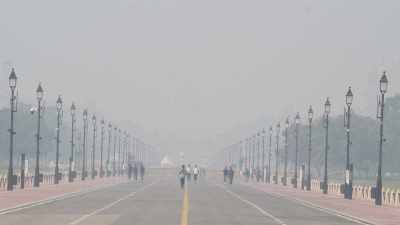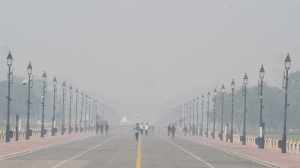Opening the heritage gate
Quest is a project conducted by The Indian Express in schools in and around Delhi. It covers more than 50 schools in Delhi and NCR.

Students of Tagore Senior Secondary School, Mayapuri, attended a heritage walk at Kashmere Gate and St James Church, conducted by The Indian Express in association with INTACH and ASI
Quest
A schools’ initiative from The Express Group
Quest is a project conducted by The Indian Express in schools in and around Delhi. It covers more than 50 schools in Delhi and NCR.
Quest aims at stirring awareness and opinions. Today, when all that children see are shopping malls and cineplexes, we at The Indian Express want to show a completely different picture of this city to them. Delhi has changed beyond nostalgia and recognition since Independence. How many of these kids know of the ‘Seven Cities’ of Delhi or the stories of the pigeon fliers of Old Delhi?
The idea behind such an activity is to create awareness about the various structures and monuments that the students do not know about. This is a specially designed programme, which will help the students appreciate the rich culture and background of this city. In association with INTACH and ASI, this is a small effort on our behalf to depict a phase of our national life and the decay of a whole culture, a particular mode of thought and living. The visit is followed by the students sending in articles, pictures, poems, paintings, and collages to express their experiences about the heritage walk.
We invite schools to be a part of this Express Group initiative.
For queries mail to heritagewalks@expressindia.com
A fun Walk
The walk was very informative and we learnt a lot about the heritage of Old Delhi and its historical importance. Reaching there, we were informed about all nearby historical sites and their significance.
We were shown around a Christian cemetery, named after British Brigadier John Nicholson, who fought and died during the Revolt of 1857.
Kashmere Gate was our next destination, built by Mughal Emperor Shahjahan and named so as he used to head for Kashmir in the summers through this gate.
Kashmere Gate boasts of both Indo-Islamic and Turko-Afghani architecture.
It has two arched openings and there are compartments on the sides attached to the gate.
Many buildings had umbrella-style roofs, domes and arches displaying the architecture of the Mughal era. There was also a mosque which was constructed in the beginning of the 17th Century.
It was an enjoyable trip and all of us had a great day. We would also love to participate in such heritage walks around Qutab Minar, Humayun’s Tomb and the Old Fort.
—Rajshri Jain, IX-A
Walking through history
As part of the heritage walk, we first went to Nicholson Cemetry . As we entered the cemetery, we saw the grave of John Nicholson , a British Brigadier. There were many other graves of English soldiers, administrators and their wives who were buried there.
Next, we went to Kashmere Gate, which was built by Shahjahan . It was one of the entrance gates of Old Delhi. In 1857, Britishers fought a tough battle there. We also saw many other buildings made in the Mughal era. We went from there to St Stephen’s College and the Indira Gandhi Indian Institute of Technology This is a very large university as well as one of the oldest in Delhi. We also went to the St James Church, which was built by John Skinner who fought against the Marathas. He was left behind on the battlefield injured and weak. He then prayed and vowed that if he survived he would build a church to declare his faith in the Almighty. Afterwards, he kept his promised and built the church.
— SURBHI GROVER, IX-A
Now, wish for more such walks
It was a great experience learning about the rich heritage of India. We went to Kashmere Gate which was the north gate of Shahjahanabad. The name was given by Emperor Shahjahan. It was a large gate made of Lakhai stone and was so strong that it bore the brunt of Britishers attack led by Brigadier John Nicholson in 1857.
We also saw his grave and that of Vasudas Ramachandra, a professor of Mathematics at Zakir Hussain College. We were then taken to see Maharaja Agarsen Park, which was a beautiful place. We also visited St James Church, which was built by Sir James in 1825, a General in a regiment called Skinner’s Horse. We also saw Fakoral Masjid, built in 1728, as well as the original building of St Stephen’s College. Last but not the least, we visited the house of Shahjahan’s oldest son Dara Shikoh.
As residents of Delhi for many years, we have visited many places in Delhi. But this trip proved to be highly enjoyable as well as enriched our knowledge by making us aware of our rich heritage and great architecture.
I must thank Indian Express for initiating such activity for school students, as this is the time when we can learn about the history and glorious heritage of our great India.
The trip was fascinating and I wish that I could go for more such trips.
— kunal sahni, X-B
Grave to GATE: a heritage tour
Kashmere Gate was an interesting and historical place , one that is highly unforgettable.We started our walk, with the help of a guide , from Nicholson’s Cemetery — named after John Nicholson, a Brigadier of the British Army. There were the graves of British soldiers who died in the war of 1857. We then proceeded towards the famous Kashmere Gate, which has lent its name to the entire area around it. Our guide told us about the history of this Gate. At the time of the Mughals there were 13 gates in Delhi, out of which 11 were destroyed by Britishers. Only two remained — Kashmere Gate and Ajmeri Gate. At the end of the walk, we went to one of the oldest churches of India, known as St James Church.
— Satyam Kumar, IX-A
Interesting and historical journey
Kashmere Gate, where we went as a part of our heritage walk, was a very interesting place and full of historical relevance.
With the help of a guide, we then went to Nicholson Cemetery, named after John Nicholson, a Brigadier of the British Army. There, we saw the graves of British soldiers who died in the Revolt of 1857. The graves were made up of a stone called Doom stone. After that we went to Kashmere Gate . Our guide told us that in ancient times, there were 13 gates in Delhi out of which 11 gates were demolished by the British and only 2 gates are left at present. They are Kashmere Gate and Ajmeri Gate. Kashmere Gate was the way Mughal emperors took to go to Kashmir. The gate was also the boundary of the territory under the Mughals . This gate had the sign of cannon balls on it. We also saw the old buildings in the area and later went to St James Church. It is one of the oldest churches in India, made by John Skinner.
— PANKAJ VERMA, IX-A





- 01
- 02
- 03
- 04
- 05


























